
Navigating the World of Currencies and Exchange Rates
The topic of currencies and exchange rates is a dynamic landscape influenced by multiple factors, including economic indicators, geopolitical events, and investor sentiment. Effectively navigating the currency market can lead to strategic advantages, risk mitigation, and enhanced financial decision-making.Currencies
There are around 180 different currencies worldwide, but only a few of them play a major role in international trading, finance or central bank forign exchange reserves. Those currencies are often called dominant currencies GOPINATH et. al. The two most important dominant currencies are:
- United States Dollar (USD): The US dollar has been the most dominant currency for many decades. It is widely accepted around the world and serves as the primary reserve currency. Many commodities, such as oil, are priced and traded in dollars. The global financial system is heavily dependent on the US dollar.
- Euro (EUR): The Euro is the currency of the Eurozone. It is the second most traded currency in the world and has a significant presence in international trade and financial markets. The Euro is also used as a reserve currency by some central banks.
Gopinath, Gita, and Oleg Itskhoki. "Dominant currency paradigm: A review." Handbook of International Economics 6 (2022): 45-90.
These currencies above have traditionally been considered the most dominant. However, it's important to note that the dominance of currencies can change over time based on economic or geopolitical factors. Other currencies, such as the Japanese Yen (JPY), the British Pound Sterling (GBP), the Swiss Franc (CHF), the Canadian Dollar (CAD), the Australian Dollar (AUD), and the Chinese Renminbi (CNY) also play important roles in specific regions or industries.
Currency Exchange Rates
Exchange rates determine the value of one currency relative to another. They are influenced by various factors such as interest rates, inflation, economic indicators, political events, and market sentiment. That kind of exchange rate (fx) risk refers to the potential for movements in exchange rates that negatively affect the value or cash flows associated with financial transactions in the global market and needs hedging approaches for mitigation.
Cross Currency Rates
Cross currency rate is the exchange rate of two currencies, neither of which is the base currency in the pair. To calculate a currency cross rate, you typically need to use the exchange rates of the two currencies involved, as well as the exchange rates of those currencies with a common base currency.
Let's use the Euro (EUR) as the base currency and consider the cross rate between the British Pound Sterling (GBP) and the Japanese Yen (JPY). To calculate the cross rate between GBP and JPY using EUR as the common base currency, we'll need to use the exchange rates of GBP/EUR and JPY/EUR.
Example: Currencies and Exchange Rates in ODSL
Amongst other currency exchange rate providers we also store data from European Central Bank and use it in the following example. The time horizone that is chosen here is 20 June 2019 until 20 June 2023.
Visualization of the Exchange Rate: EUR/JPY
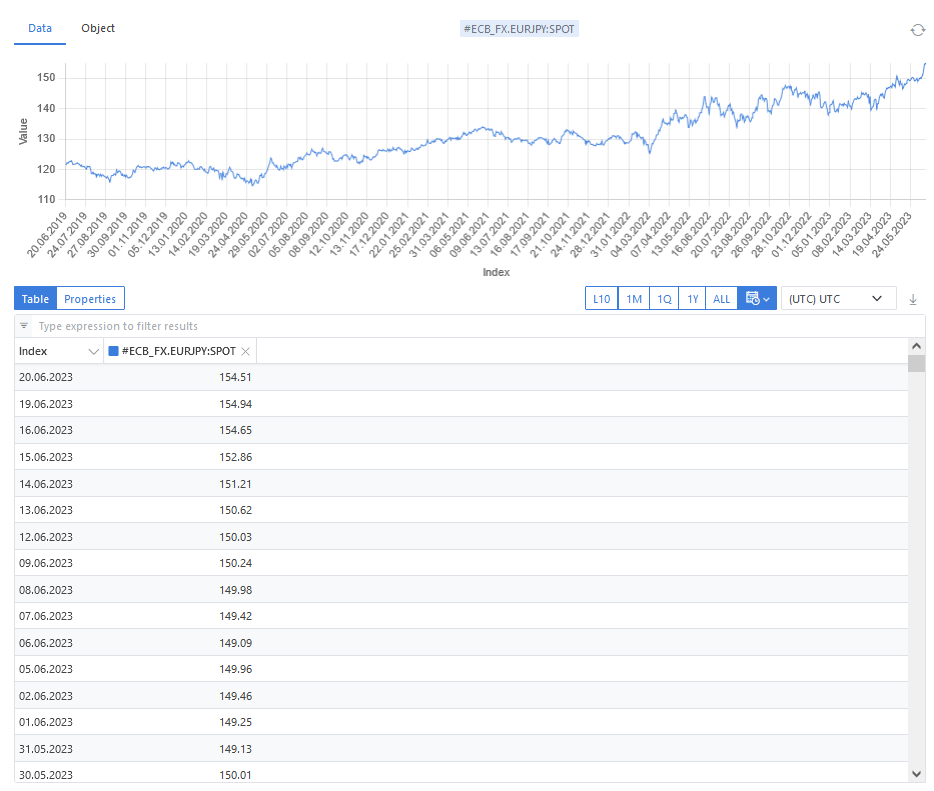
Visualization of the Exchange Rate: EUR/GBP
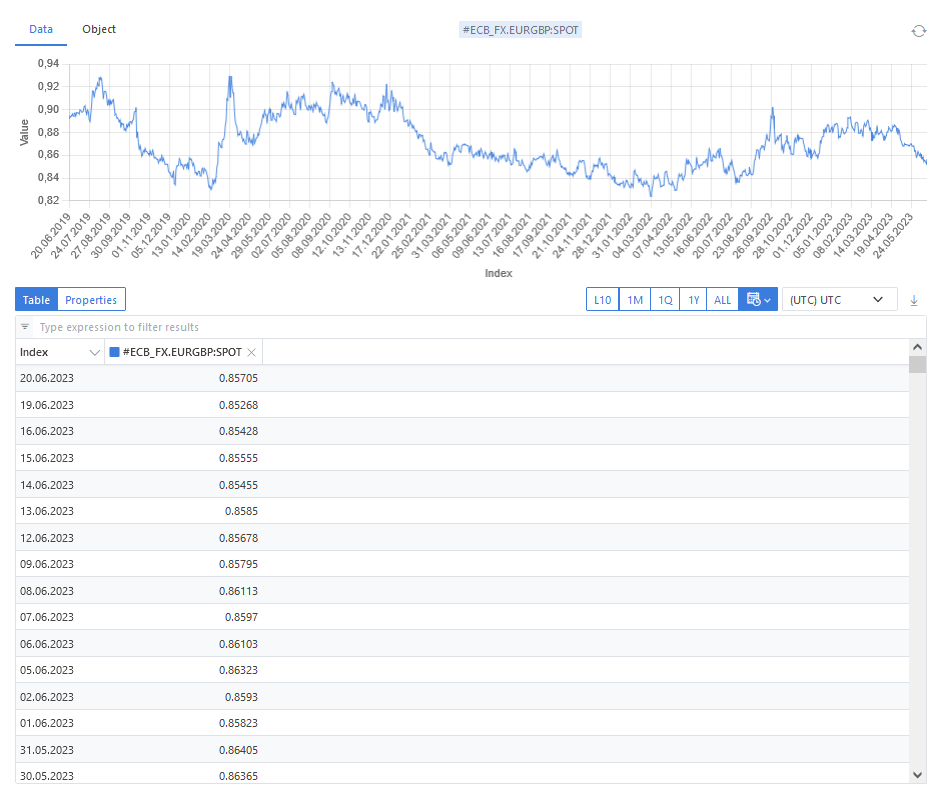
Calculation and Visualization of the Cross Currency Rate: JPY/GBP
The calculation is executed with an ODSL script function and the cross currency rate is held in a smart time series.
function crossRate(ts1, ts2)
ts2 = fill(ts2, "forward")
crossRate = ts1/ts2
end
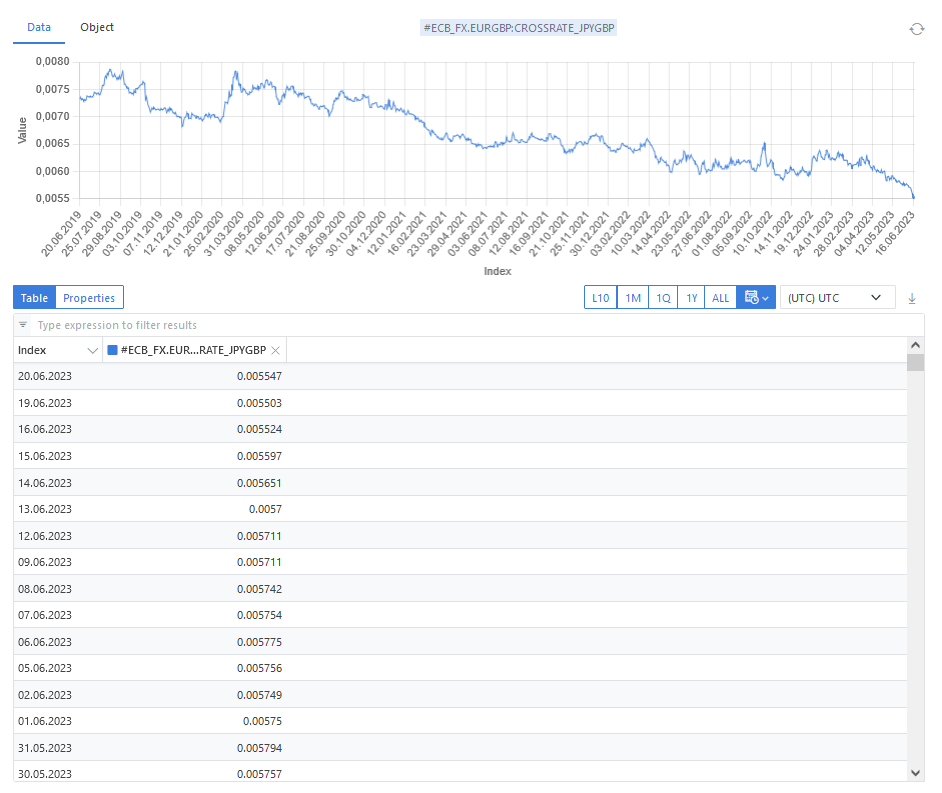
Statistics
The main descriptive statistics like minimum, maximum, mean, and standard deviation are calculated for 4 years of history for all the above mentioned currencies. The exchange rates are provided by European Central Bank or in case of cross rates they are calculated in ODSL smart time series.
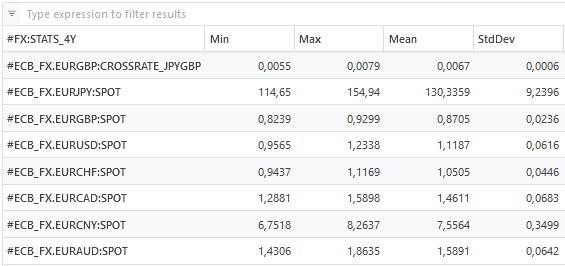
Correlations
The correlations are calculated in an ODSL script and shown up in a matrix. The highest correlations are: 0.8886 for EUR/CAD vs. EUR/CNY followed by 0.7717 for EUR/USD vs. EUR/CHF and 0.7625 for EUR/CAD vs. EUR/USD. The exchange rates against EUR/JPY are negatively correlated.
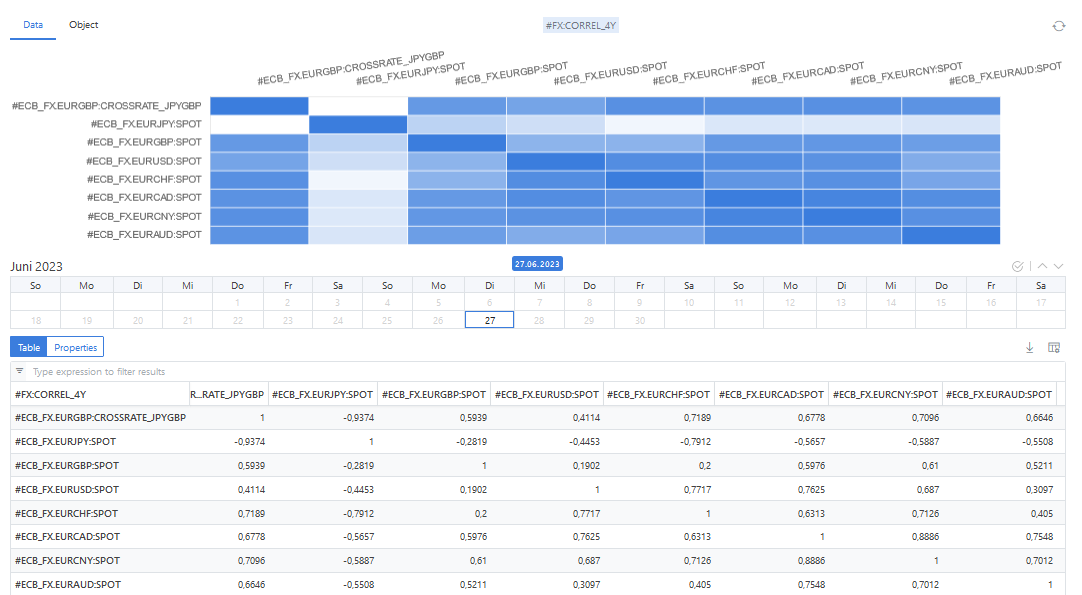
Conclusion
In conclusion, understanding currencies and exchange rates is not merely a technical exercise, but empowers businesses to make informed decisions and mitigate risks in an increasingly interconnected global financial marketplace. It allows businesses to strategically manage their international operations, optimize pricing and hedging strategies, and adapt to ever-changing market conditions.
Next steps
Do you want to see this in action and see how you can benefit from OpenDataDSL?
Fill out the form below, we will contact you to arrange a personally tailored demo.

How about a demo?
Our team is here to find the right solution for you, contact us to see this in action.
Fill out your details below and somebody will be in contact with you very shortly.
More information or free trial?
Tell us about your project, and we can let you know how we can help.
Contact us at info@opendatadsl.com
